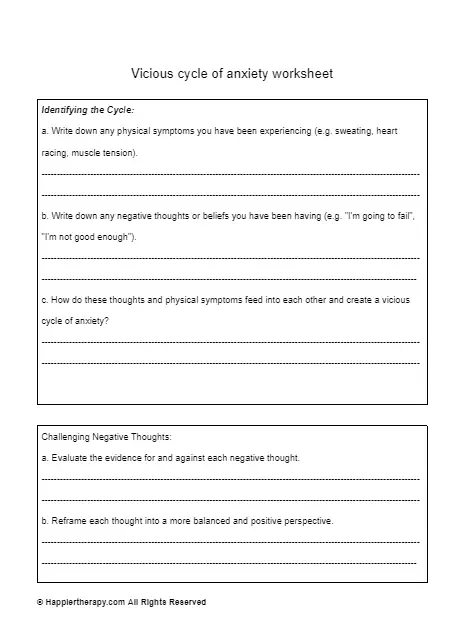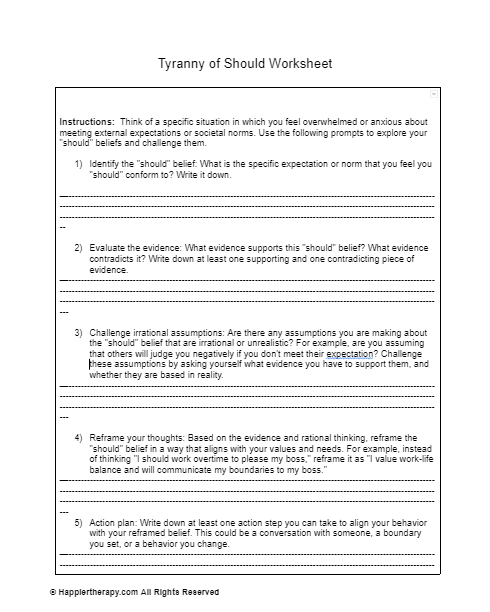Unhealthy thinking pattern worksheet
Premium Content
Access this worksheet and 2,500 mental health worksheets. Cancel anytime
What is the theory behind this worksheet for unhealthy thinking pattern?
The theory behind this worksheet for unhealthy thinking patterns is based on cognitive behavioral therapy (CBT). CBT is a type of psychotherapy that aims to help individuals change negative or irrational thoughts and behaviors. The worksheet focuses on identifying and challenging negative thinking patterns that can lead to negative emotions, stress, and behavioral problems. The worksheet is based on the idea that thoughts, feelings, and behaviors are interconnected, and that changing negative thinking patterns can have a positive impact on one’s emotions and behavior.
Unlock deeper healing — upgrade to Premium now!
Customizable and fillable worksheets
Rights to alter the worksheets
Over 2000 worksheets
Support HappierTherapy
How will the worksheet help?
The worksheet for unhealthy thinking patterns can help in several ways:
- Identifying negative thinking patterns: The worksheet helps individuals identify and name their negative thinking patterns, which can be a powerful first step in changing them.
- Challenging negative thoughts: By providing a structured process for evaluating the evidence for and against negative thoughts, the worksheet helps individuals challenge the validity of these thoughts. This can lead to a more balanced and rational perspective.
- Improving mood: By changing negative thinking patterns, individuals can experience improved mood and reduced stress, anxiety, and depression.
- Promoting self-awareness: The worksheet can help individuals become more self-aware and mindful of their thoughts and emotions, which can lead to improved self-esteem and a better understanding of themselves.
How to use the worksheet?
Here are some steps to use the worksheet for unhealthy thinking patterns:
- Set aside quiet time to focus on the worksheet. It’s important to be honest with yourself and take the time to reflect on your thoughts and emotions.
- Complete section I, “Identifying Unhealthy Thoughts.” This section will help you identify specific negative thoughts that you have had recently.
- In section II, “Challenging Unhealthy Thoughts,” write down the evidence for and against each thought you identified in section I. Evaluate the evidence objectively, looking for both positive and negative aspects of each thought.
- In section III, “Finding More Balanced Thoughts,” rewrite each thought from section I in a more balanced and rational form. Try to find evidence that supports the new, more balanced thought.
- Repeat the process for each thought identified in section I. Remember that changing negative thinking patterns takes time and practice, and to be patient and kind with yourself as you work towards healthier thinking.
- Review your responses and reflect on any patterns or common themes that emerge. Consider what you have learned about yourself and your thinking patterns and think about what steps you can take to improve your thinking skills in the future.
Was this helpful?
References
1.-
Selva, J., Bc.S., & Psychologist. (2021, February 14). Challenging negative automatic thoughts: 5 worksheets (+PDF). PositivePsychology.com. https://positivepsychology.com/challenging-automatic-thoughts-positive-thoughts-worksheets/
2.-
Ackerman., C. E. (2021, February 26). Cognitive distortions: 22 examples & worksheets (& PDF). PositivePsychology.com. https://positivepsychology.com/cognitive-distortions/

 By
By


